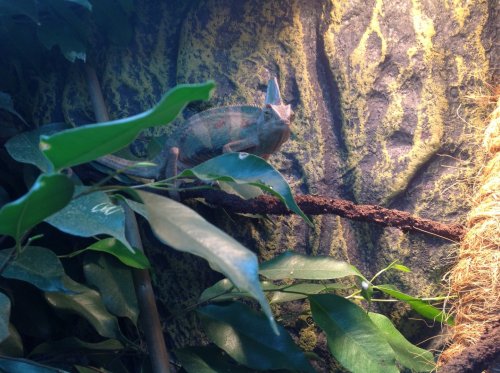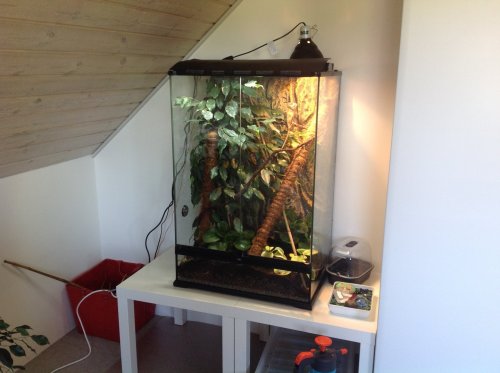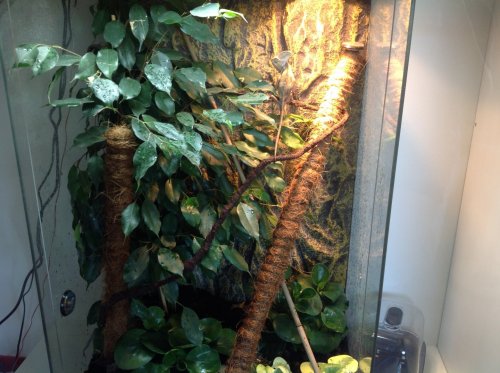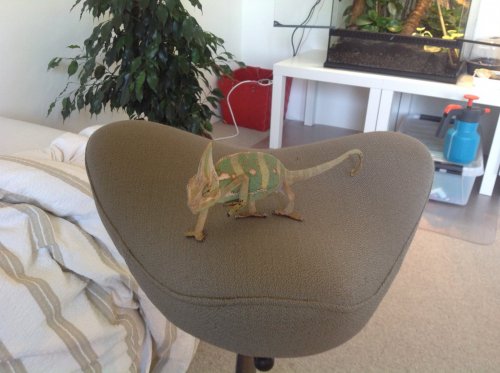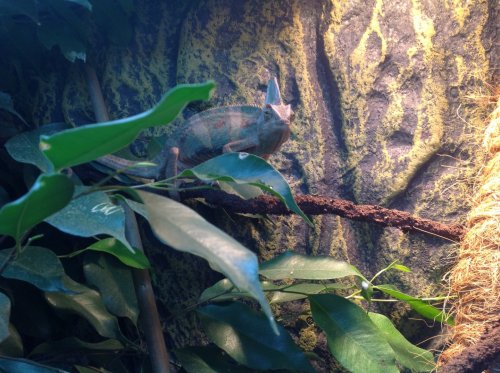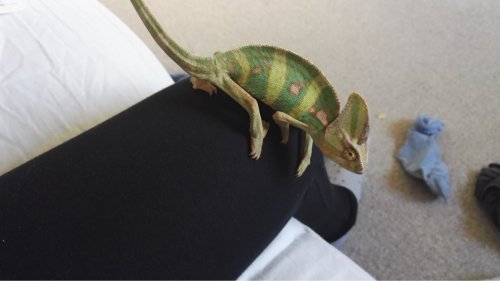Veiled Balter
New Member
About a month ago I bought a veiled chameleon, and recently I have grown worried.
He only weighs 45 grams, but he eats and drinks fine. I can often see his room ribs, but I have been told that's normal. I currently feed him 4 crickets every 2-3 days, I tried feeding him more but he spat the 5th out.
It's clearly a male, but still he's digging holes. I checked the temperature, and its normal. I couldn't find other reasons for him to dig. He loves to go out of the terrarium, and often try to escape, but it's how animals behave, right?
Is he healthy or am I doing some thing wrong?
He only weighs 45 grams, but he eats and drinks fine. I can often see his room ribs, but I have been told that's normal. I currently feed him 4 crickets every 2-3 days, I tried feeding him more but he spat the 5th out.
It's clearly a male, but still he's digging holes. I checked the temperature, and its normal. I couldn't find other reasons for him to dig. He loves to go out of the terrarium, and often try to escape, but it's how animals behave, right?
Is he healthy or am I doing some thing wrong?

